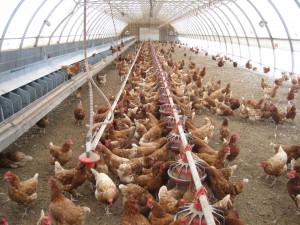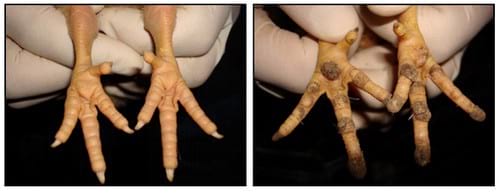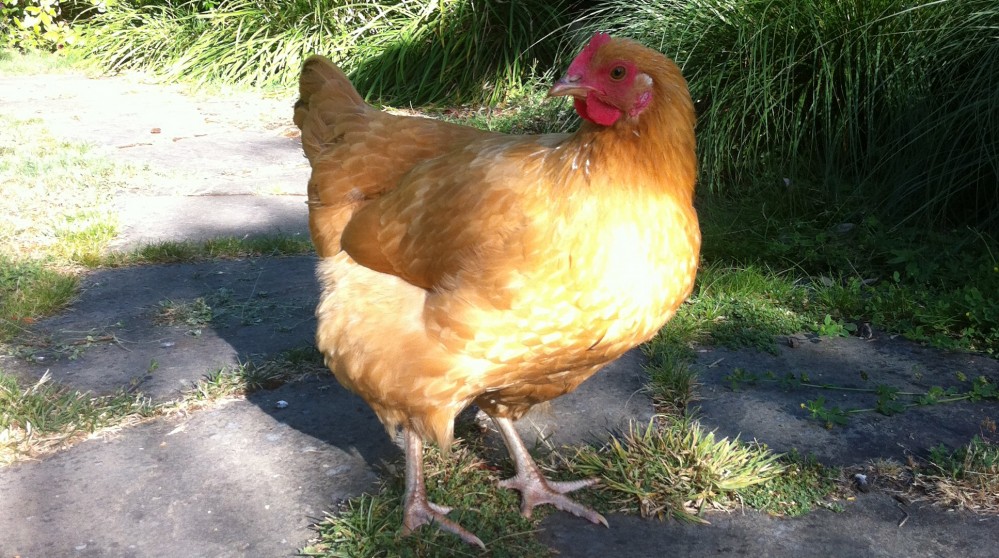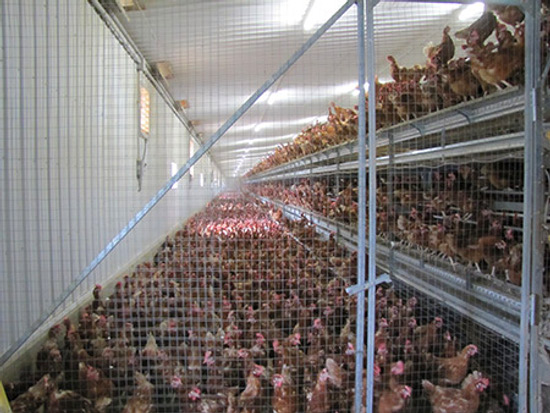In free run systems, hens are all housed together in a large barn allowing for freer movement compared to cages.
Flooring consists of either slats or a fibrous material such as saw dust or straw. While slats improve hygiene, litter flooring allows for foraging and thus a combination is often used (Street, 2012).

Nest boxes may be provided which may be automated to collect the eggs along a moving belt (Vencomatic, 2013). To avoid aggression over competition for nest boxes the National Farm Animal Care Council (NFACC) requires 20 individual nest boxes per 100 hens and states that “community or roll-away nests should be based on the behaviour and comfort of the birds” (NFACC, 2003).
The NFACC require free run systems to provide a typical white-egg laying hen (1700g) with a minimum of 1700cm² floor space in an all litter system or 850cm² in an all slat system.
Although environmental enrichments such as perches and dust bathing areas are not compulsory, they can be easily installed. The NFACC (2003) states that “free-run systems generally have greater freedom of movement than cage-housed pullets and layers. These systems allow for the expression of more of the behaviours normally associated with birds. Perches and nests are easily constructed in free-run housing. As an indoor system, it protects birds from predators and the outside environment.”
Aviaries are a variation of conventional free run systems which involve multiple levels of perching areas in combination with slat flooring. The multitiered system allows for greater stocking density and thus the aforementioned space requirements do not apply, though adequate perch space is recommended to minimize aggression (NFACC, 2003).
Compared to caged systems, free run barns provide some obvious advantages in terms of hen welfare. Namely, greater freedom of movement (and consequently reduced bone breakage) as well as foraging opportunities (in litter-based systems). However, there are also several disadvantages to these systems both in terms of welfare and production.
One welfare problem arising in large group housing is increased aggression. A study of the behavior of hens during the first two weeks after being introduced into either a battery cage, furnished cage or aviary housing system found that displays of aggression were lower in both the cage systems than in the aviary, indicating the “early establishment of social order in both cage systems” (Eguchi et. al. 2006).
“Comfort behaviors, including dust bathing, were noted less in the aviary than in the furnished cages throughout the observation period” (Eguchi et. al. 2006). Appleby and Hughes (1991) agree that alternative (cage free) systems “often expose birds to the danger of disease, to aggression from dominant birds and to the risk of cannibalism or beak trimming to avoid it.”
Source: http://twodressesstudio.blogspot.ca/2010/08/last-thursday.html
As previously mention, ammonia and dust may reduce air quality in litter-based housing if not properly managed (Street, 2012). The NFACC (2003) states that “[a]mmonia concentrations greater than 25 ppm are not acceptable for human and bird health.”
The often moist conditions of litter systems may lead to painful dermatitis on the hens’ feet and can range from “superficial lesions accompanied by hyperkeratosis to profound lesions affecting not only the epidermis but as well the underlying tissue accompanied by acute or chronic inflammations and ulceration” (Niebuhr et. al. 2009). One study found prevalence of lesions in aviary housed hens to be between 25 and 37%. (Niebuhr et. al. 2009)

Source: Czarick, M. Fairchild, B.D. “Minimizing Foot Pad Dermatitis & Maintaining Good Paw Quality” 2012.
One study in the Netherlands found that costs per kg of eggs produced were 8.2% higher in avery systems than battery cages (Van Horne, 1995), while other estimates range from 14-21% higher (Elson and Tauson, 2011).
Production may be 3-5% lower in aviaries, with increased egg cracking compared to cages (Tauson, 1998).

Source: Vencomatic


If they wouldn’t cram so many birds into the “free range” area, then I am sure many of the problems noted would be mitigated.